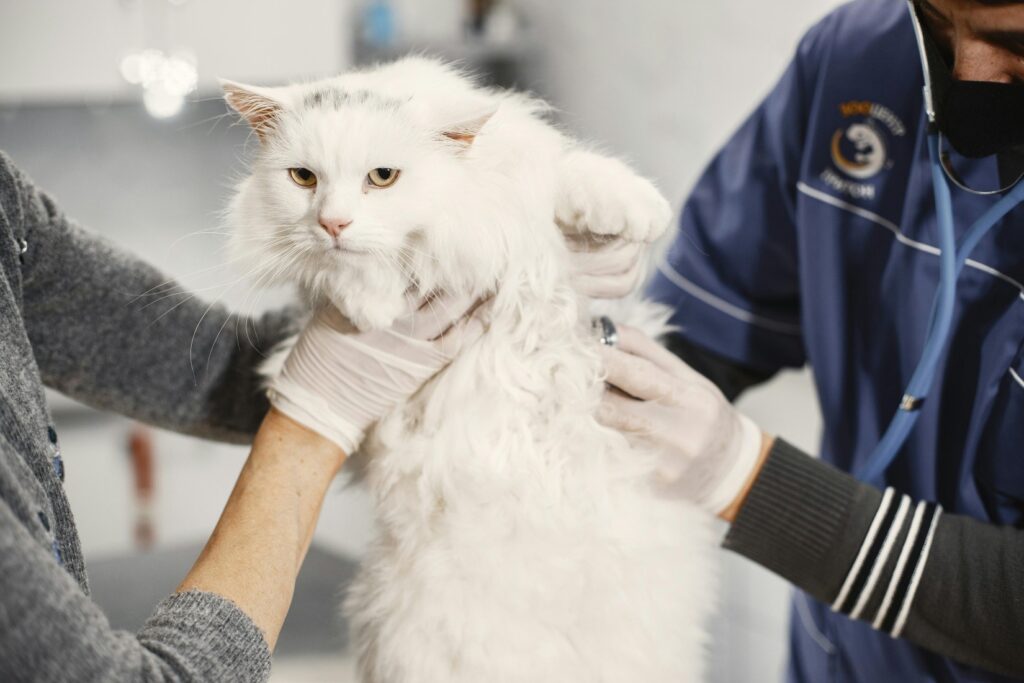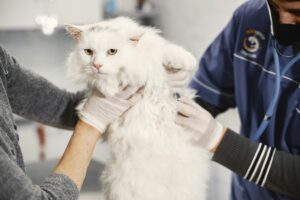Spaying a cat is a significant step that benefits her health and behavior. However, the care doesn’t stop after the surgery. Post-operative care is vital to ensure your cat’s recovery is smooth and comfortable. In this guide, we’ll cover the key steps to help your feline friend heal safely after her spay procedure.
Understanding the Post-Operative Period
Immediately after surgery, your cat will be drowsy and may appear disoriented due to the anesthesia. This grogginess is normal and usually fades as the medication wears off.
Debunking Common Myths about Spaying Cats
Spaying is a responsible choice with substantial benefits, yet many myths can discourage pet owners. Let’s clarify some common misconceptions:
Myth 1: Spaying Will Cause Weight Gain
Fact: Spaying can slightly increase appetite, but it doesn’t directly cause weight gain. Maintaining a balanced diet and ensuring regular activity are key to managing your cat’s weight.
Myth 2: Spaying Changes a Cat’s Personality
Fact: Spaying often has a positive effect, reducing aggressive behavior, roaming, and the tendency to spray.
Myth 3: Spaying Is Risky or Painful
Fact: Spaying is a routine procedure with a high success rate. Veterinary advancements ensure it’s safe and minimally invasive.
Myth 4: My Cat Should Have a Litter Before Spaying
Fact: Allowing a litter first offers no benefit. Early spaying can reduce the risk of health issues like uterine infections and mammary tumors.
Myth 5: Spaying Is Expensive
Fact: While the initial cost may seem significant, spaying prevents costly health problems and unwanted pregnancies, providing long-term savings.
Setting Up a Comfortable Recovery Space
Provide Quiet and Calm
Choose a quiet, peaceful area where your cat can rest undisturbed. Avoid loud noises and other pets to create a serene environment for recovery.
Soft, Cozy Bedding
Prepare a soft bed that doesn’t irritate the incision site. Avoid rough materials and make sure she has a comfortable place to snuggle up.
Limit Physical Activity
For the first few days, restrict your cat’s activity. Prevent her from jumping, climbing, or engaging in energetic play to avoid straining the incision.
Keep Her Warm
Ensure your cat stays warm, especially on the first night post-surgery. Use a cozy blanket or a heated pad to help her maintain body temperature.
cat neuter near me
Monitoring Your Cat’s Recovery
Check the Incision Site
Observe the incision for any changes. A bit of redness and swelling is normal, but excessive redness, swelling, or discharge should prompt a call to the vet.
Watch Appetite and Water Intake
Monitor her food and water consumption. A temporary decrease in appetite is normal, but she should gradually start eating and drinking as she recovers.
Ensure Normal Litter Box Use
Check that she’s using the litter box normally. Any difficulty urinating or defecating should be brought to the vet’s attention.
Observe Behavioral Changes
Expect your cat to be a bit less playful and possibly more affectionate as she recovers. Watch for any signs of distress or discomfort, and call your vet if you notice anything unusual.

Essential Post-Operative Care Tips
Administer Prescribed Medications
If your veterinarian has prescribed medications, follow dosage instructions closely and complete the entire course for effective treatment.
Use an E-Collar if Needed
An Elizabethan collar (e-collar) might be necessary to prevent licking or biting of the incision. While it might seem uncomfortable, it’s crucial to avoid infection and ensure proper healing.
Skip the Baths
Avoid bathing your cat during recovery. If needed, gently clean around the incision with a damp cloth to remove any dirt.
Schedule Follow-Up Visits
Make an appointment with your veterinarian to assess the healing of the incision and your cat’s overall progress.
Addressing Common Post-Operative Concerns
Bleeding
A small amount of bleeding is normal, but excessive bleeding or blood clots should be reported to your veterinarian immediately.
Infection Signs
If you notice redness, swelling, discharge, or a foul odor from the incision, contact your vet as these can indicate infection.
Pain Management
Pain medications can help reduce discomfort, but if your cat is excessively lethargic, won’t eat, or shows signs of distress, consult your veterinarian.
Visit Your Veterinarian for Routine Checkups
A gentle veterinary visit can make all the difference. For instance, at the Animal Hospital of Aurora, staff provide thorough examinations, checking your cat’s teeth, heart, and any health changes. They’ll discuss preventive care options like parasite prevention, giving you peace of mind that your pet is in good hands.
Conclusion
With these post-operative care steps, you can help your cat recover comfortably. Remember, every cat is unique, so keep a close eye on her recovery and reach out to your vet with any concerns. With attentive care, your feline friend will be back to her playful self in no time.




